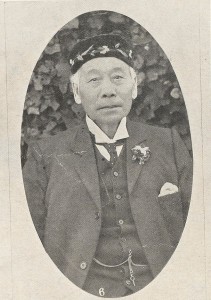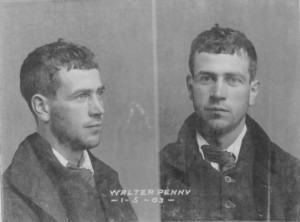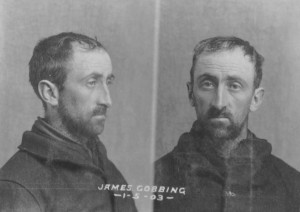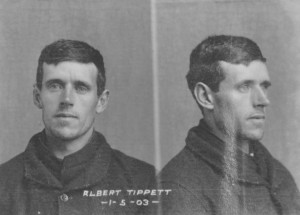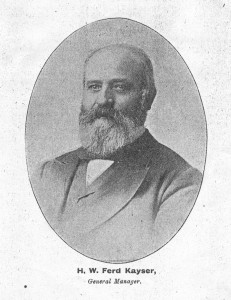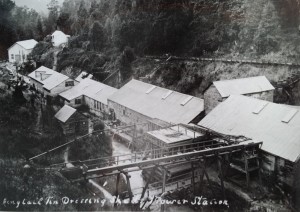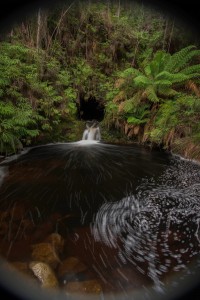
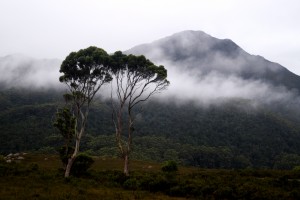
In 1902 you could get a tertiary education at Zeehan, a place dominated by frogs, snakes and marsupials a dozen years earlier. The Zeehan School of Mines was affiliated with the University of Tasmania, putting it on equal academic footing. The university issued the school’s diplomas and certificates, and appointed its examiners. Subjects studied at Zeehan could be counted towards a degree from the University of Tasmania.[1]
Yet the first educational institute on the west coast was established nearly two decades earlier. It stood on the claim of the Orient Tin Mine at Cumberland Creek, near Trial Harbour. Strictly speaking, it was a Methodist church—the first church on the mining fields south of Waratah.
Travelling journalist Theophilus Jones described the site when he accompanied the Minister for Lands, Nicholas Brown, on a visit to the Heemskirk tin field in May 1883. The Orient Tin Mine was then considered the premier mine in the district. Such impressive assay values had been obtained here that the future of the Heemskirk tin field seemed assured. Anticipation was then building about the first crushing at the Orient, which would follow soon after.
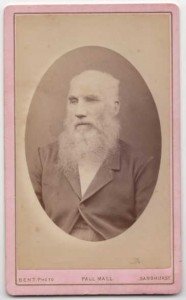
On arrival at the mine, Minister Brown, who happened to be the chairman of directors of the Orient Tin Mining Company, was ushered into Cornish mine manager Thomas Williams’ (c1826‒1901) ‘snug little’ cottage. Here the Devon-born Fanny Williams served home-made cake and tea. The new church, built by Williams and his sons Luke and Tom from sawn timber, with a split shingle roof, and a blackwood interior adorned with chandeliers, had recently been opened with a traditional Wesleyan Methodist tea meeting. Fanny Williams and other mining folk had provided sandwiches, sponge cakes and blanc manges for the occasion.[2] (Later, a collection of books would be obtained and, with Luke Williams acting as the librarian, during week days the church would act as a reading room, like a tiny mechanics’ institute.[3]) The machinery was also impressive. A Robey And Co steam engine imported from England had been installed as an auxiliary to the waterwheel which would drive the 10-head stamper battery. Five Munday’s self-emptying concave buddles were ready for tin separation.[4] Nearby was another Cornish legacy, a grave with a picket fence which represented the final resting place of the wife of the original Orient mining manager, John Williams.[5]
The surprise failure of the Orient crushing in October 1883 threw ‘a great damper … on lode tin mining at Mount Heemskirk …’[6] Confidence in the field evaporated. Thomas Williams resigned his post, and the little church and reading room was removed. Mayne’s Tin Mine later produced 140 tons of metallic tin near the site of the Orient, showing that the area had at least limited potential.[7]
Two of Williams’ sons later followed in his footsteps. Richard Williams (c1866–1919) managed the Colebrook Mine on the west coast of Tasmania, then copper mines at Chillagoe and Cloncurry in Queensland, the Byron Reef Gold Mine in Victoria before dying at Southern Cross, Western Australia.[8] Former Orient librarian Luke Williams (c1859‒1931) became a well-known Tasmanian mine manager, operating, among others, the Mount Read Mine and the Chester Mine. The village of Williamsford was named in his honour.[9] He had a long association with Robert Sticht, general manager for the Mount Lyell Mining and Railway Company.
Luke Williams was innovative. Under his management, in the winter of 1917, the Copper Reward Mine at Balfour switched from raising copper underground to raising tin from the button-grassed surface. The button-grass was burnt and the land ploughed by horse-team. The loose earth was then scooped into a sluicing race, down which a horse drew a ‘puddling harrow’ (sluicing fork) to break down lumps and reduce the material to a pulp. Two dams built from button-grass sods cemented together by clay supplied a hydraulic sluicing operation which worked the lower face of the tin-bearing ground. Operations ceased when the price of tin dropped in 1921.[10] Williams died in comfortable retirement in Hobart a decade later as a well-known pig breeder and orchardist, his early efforts to enlighten the west coast having been long forgotten.[11]
[1] Patrick Howard, The Zeehan El Dorado, Mount Heemskirk Books, Blackmans Bay, 2006, pp.186‒87.
[2] ‘Our Special Reporter’ (Theophilus Jones), ‘The west coast tin mines’, Mercury, 28 May 1883, p.3;
[3] (Theophilus Jones), ‘West coast history’, Zeehan and Dundas Herald, 25 December 1896, p.1; Luke Williams, ‘The Orient Library, Heemskirk’, Mercury, 27 September 1883, p.3.
[4] Gustav Thureau, Report on the present condition of the western mining districts, Parliamentary Paper 89/1884, p.1.
[5] (Theophilus Jones), ‘West coast history’, Zeehan and Dundas Herald, 25 December 1896, p.1. She died in June 1882 (‘Mount Heemskirk’, Mercury, 14 June 1882, p.3).
[6] Editorial review of 1883, Launceston Examiner, 1 January 1884, p.2.
[7] AH Blissett, Geological Survey explanatory report, One Mile Geological Map Series, Zeehan, Department of Mines, Hobart, 1962, p.106.
[8] ‘About people’, Examiner, 1 October 1919, p.6.
[9] Con Henry Curtain, ‘Old times: Heemskirk mines and mining’, Examiner, 27 February 1928, p.5.
[10] ‘Balfour notes’, Circular Head Chronicle, 16 February 1921, p.3.
[11] ‘Mr Luke Williams’, Advocate, 29 July 1931, p.2.
